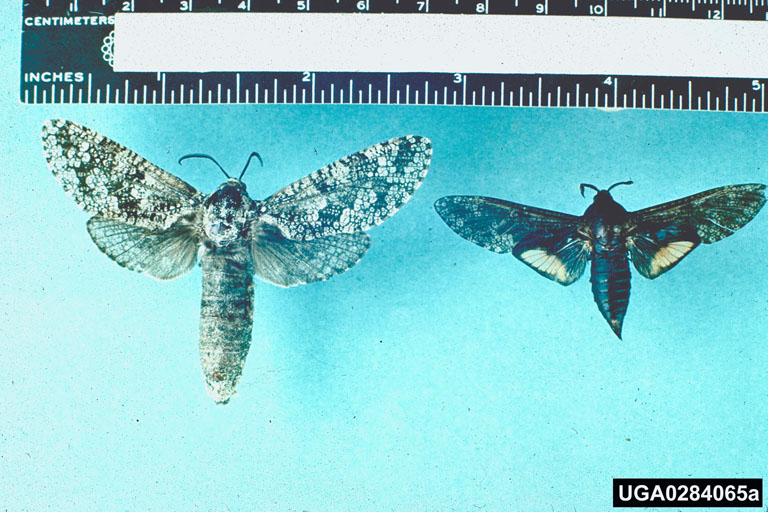|
Prionoxystus
''Prionoxystus'' is a genus of moths in the family Cossidae. Species * '' Prionoxystus macmurtrei'' Guérin-Meneville, 1829 * '' Prionoxystus piger'' Grote, 1865 * ''Prionoxystus robiniae ''Prionoxystus robiniae'', the carpenterworm moth or locust borer, is a moth of the family Cossidae. It was first described by Peck in 1818 and it is found in southern Canada and most of the United States. The wingspan is 43–85 mm. Adu ...'' Peck, 1818 References Natural History Museum Lepidoptera generic names catalog Cossinae {{Cossinae-stub ... [...More Info...] [...Related Items...] OR: [Wikipedia] [Google] [Baidu] |
Prionoxystus Robiniae
''Prionoxystus robiniae'', the carpenterworm moth or locust borer, is a moth of the family Cossidae. It was first described by Peck in 1818 and it is found in southern Canada and most of the United States. The wingspan is 43–85 mm. Adults are on wing from May to July depending on the location. The larvae feed on locust, oak, chestnut, poplar, willow, maple and ash Ash or ashes are the solid remnants of fires. Specifically, ''ash'' refers to all non-aqueous, non- gaseous residues that remain after something burns. In analytical chemistry, to analyse the mineral and metal content of chemical samples, ash .... The species is considered a pest, because the tunnels the larvae create decrease the value of hardwood lumber. References External links * Cossinae {{Cossinae-stub ... [...More Info...] [...Related Items...] OR: [Wikipedia] [Google] [Baidu] |
Prionoxystus Piger
''Prionoxystus piger'', the baccharis carpenterworm moth, is a moth in the family Cossidae. It was described by Augustus Radcliffe Grote in 1865. It is found in Florida and Cuba. Adults have been recorded on wing from February to April in Florida. The larvae bore in the main stem of ''Baccharis ''Baccharis'' is a genus of perennials and shrubs in the aster family (Asteraceae). They are commonly known as baccharises but sometimes referred to as "brooms", because many members have small thin leaves resembling the true brooms. They are n ...'' species. References * Cossinae Moths described in 1865 {{Cossinae-stub ... [...More Info...] [...Related Items...] OR: [Wikipedia] [Google] [Baidu] |
Prionoxystus Macmurtrei
''Prionoxystus macmurtrei'', the little carpenterworm moth, is a moth of the family Cossidae. It is found from Ontario and Quebec to Florida, west to Texas, north to Minnesota. The wingspan is 45–75 mm. Adults are on wing from April to July. The larvae feed on ash, maple and oak An oak is a tree or shrub in the genus ''Quercus'' (; Latin "oak tree") of the beech family, Fagaceae. There are approximately 500 extant species of oaks. The common name "oak" also appears in the names of species in related genera, notably ''L .... The species is considered a pest, because the tunnels the larvae create decrease the value of hardwood lumber. References External linksBug Guide Cossinae {{Cossinae-stub ... [...More Info...] [...Related Items...] OR: [Wikipedia] [Google] [Baidu] |
Cossidae
The Cossidae, the cossid millers or carpenter millers, make up a family (biology), family of mostly large Miller (moth), miller moths. This family contains over 110 genera with almost 700 known species, and many more species await description. Carpenter millers are nocturnal Lepidoptera found worldwide, except the Southeast Asian subfamily Ratardinae, which is mostly active during the day. This family includes many species with large caterpillars and moths with a wingspan from . These moths are mostly grey; some have long, narrow wings and resemble hawkmoths (Sphingidae) which are more advanced macrolepidoptera, however. Many are twig, bark, or leaf mimics, and Cossidae often have some sort of large marking at the tip of the forewing uppersides, conspicuous in flight, but resembling a broken-off twig when the animals are resting. Caterpillars are smooth with a few hairs. Most cossid caterpillars are tree borers, in some species taking up to three years to mature. The caterpill ... [...More Info...] [...Related Items...] OR: [Wikipedia] [Google] [Baidu] |
Moth
Moths are a paraphyletic group of insects that includes all members of the order Lepidoptera that are not butterflies, with moths making up the vast majority of the order. There are thought to be approximately 160,000 species of moth, many of which have yet to be described. Most species of moth are nocturnal, but there are also crepuscular and diurnal species. Differences between butterflies and moths While the butterflies form a monophyletic group, the moths, comprising the rest of the Lepidoptera, do not. Many attempts have been made to group the superfamilies of the Lepidoptera into natural groups, most of which fail because one of the two groups is not monophyletic: Microlepidoptera and Macrolepidoptera, Heterocera and Rhopalocera, Jugatae and Frenatae, Monotrysia and Ditrysia.Scoble, MJ 1995. The Lepidoptera: Form, function and diversity. Oxford, UK: Oxford University Press; 404 p. Although the rules for distinguishing moths from butterflies are not well establishe ... [...More Info...] [...Related Items...] OR: [Wikipedia] [Google] [Baidu] |


